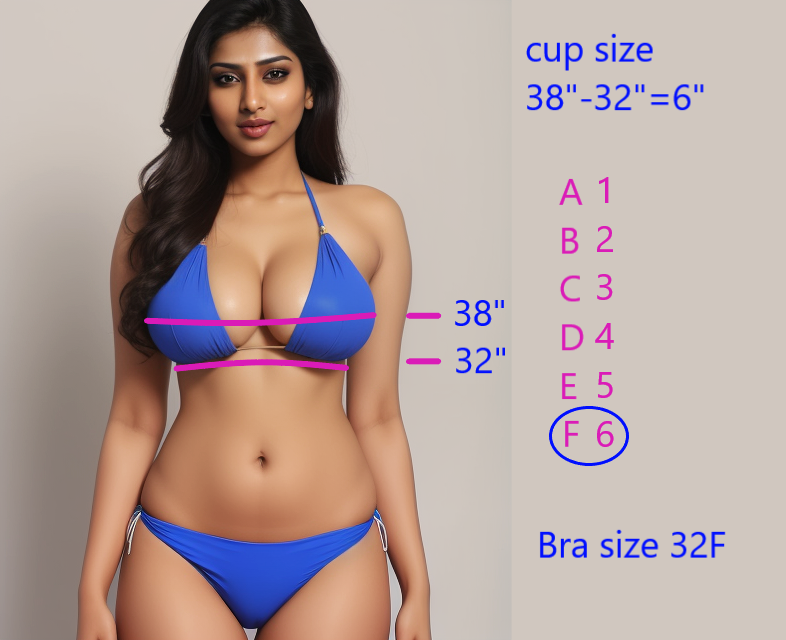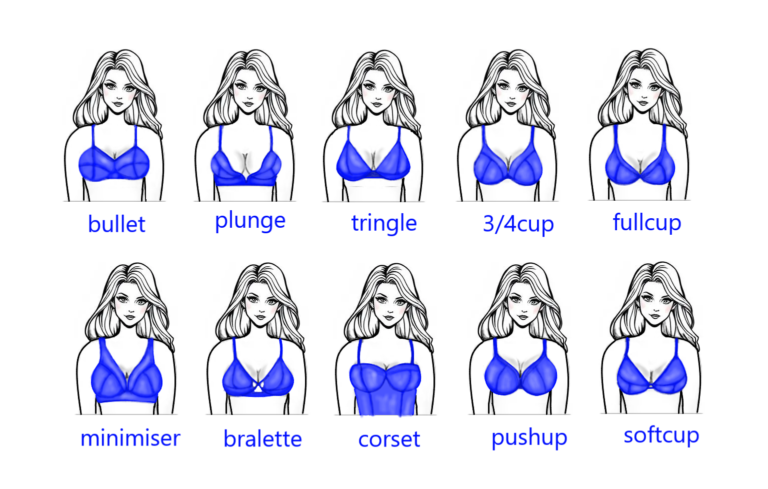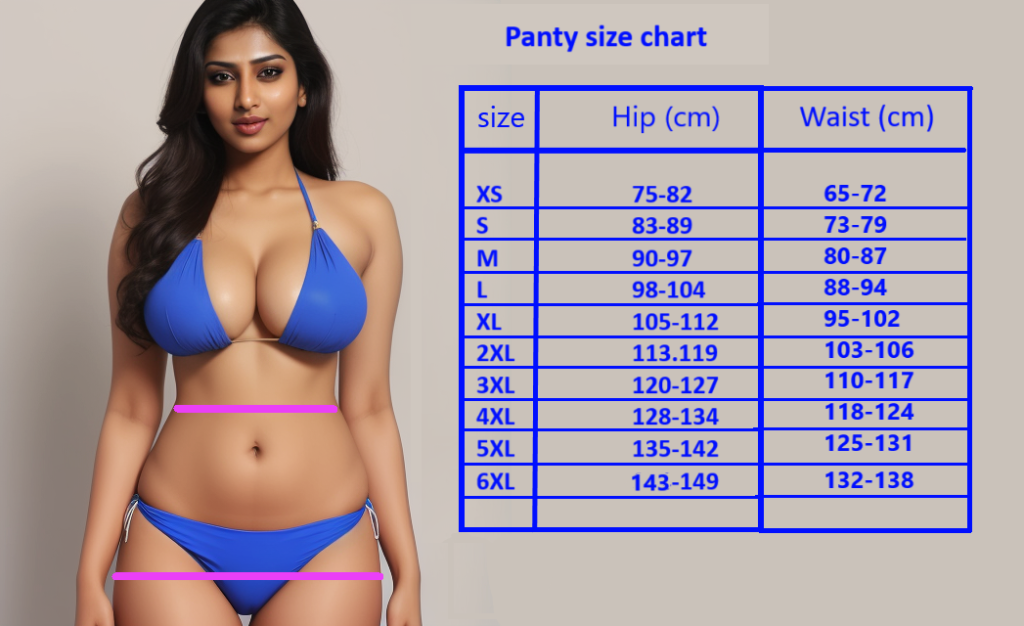woman's bra ,Panty size and types
Bra and cup size measurements
How to measure a woman's bra and cup size at home?
Measuring for a bra and its cup size involves a few steps. Here’s a quick guide:
Band Size: Measure around your ribcage, just under your bust. Make sure the tape is snug but not too tight. Round to the nearest whole number. If the number is even, add 4 inches; if it’s odd, add 5 inches. This is your band size.
Bust Size: Measure around the fullest part of your bust. Keep the tape level and not too tight. Round to the nearest whole number.
Cup Size: Subtract your band size from your bust size. The difference in inches determines your cup size:
– 1 inch = A cup
– 2 inches = B cup
– 3 inches = C cup
– 4 inches = D cup
– 5 inches = DD cup, and so on.
For example, if your band size is 34 inches and your bust size is 37 inches, the difference is 3 inches, which means you would be a 34C.

Why do women need Bras ?
Bras can help improve posture, reduce back pain, and provide a smoother silhouette under clothing.
Different types of Bras
There are many different types of bras, each designed for specific purposes and preferences. Some common types include:
- T-shirt Bra: Seamless and smooth, perfect for wearing under fitted clothing.
- Push-up Bra: Enhances cleavage by lifting and pushing the breasts together.
- Sports Bra: Provides support and minimizes movement during physical activities.
- Balconette Bra: Offers a more open neckline and lifts the breasts for a rounded shape.
- Strapless Bra: Designed to be worn without shoulder straps, ideal for off-the-shoulder outfits.
- Bralette: A soft, unstructured bra that offers light support and comfort.
- Plunge Bra: Features a deep V-neckline, perfect for low-cut tops and dresses.
Each type of bra serves a unique purpose, catering to different needs and preferences. Do you have a specific type in mind or need more information on any of these?

Size of panties
How to measure women’s panty size at home?
When it comes to selecting the right size of female panties, understanding the sizing system and how to measure accurately is crucial. Here’s a detailed breakdown of how to determine your panty size effectively.
To find your correct panty size, you need to take a measurement around the widest part of your hips. This is typically done by using a flexible tape measure

Different styles of panties
Different styles of panties can also affect fit and comfort. Common styles include:
Bikini: Offers moderate coverage with lower sides.
Briefs: Provide full coverage with a higher rise.
Thongs: Minimal back coverage for those who prefer less fabric.
Hipsters: Sit lower on the hips with wider sides for more comfort.
Choosing the right style based on personal preference and body type can enhance comfort significantly.

If your measurements fall between two sizes on the chart, it’s advisable to choose the larger size for better comfort and fit. This ensures that you do not experience any discomfort due to tightness or restriction.
The fit of panties is essential not only for comfort but also for confidence throughout daily activities. A well-fitting pair should feel secure without digging into the skin or causing irritation.
In summary, knowing how to measure correctly and understanding sizing charts are key components in finding the right panty size. Always consider trying different styles and paying attention to how they fit your body shape.